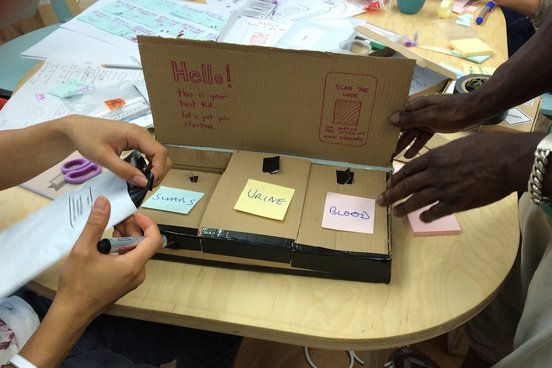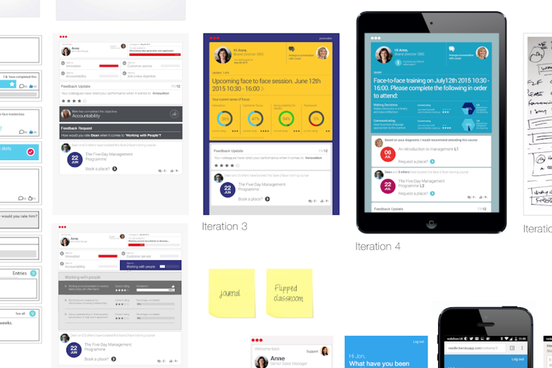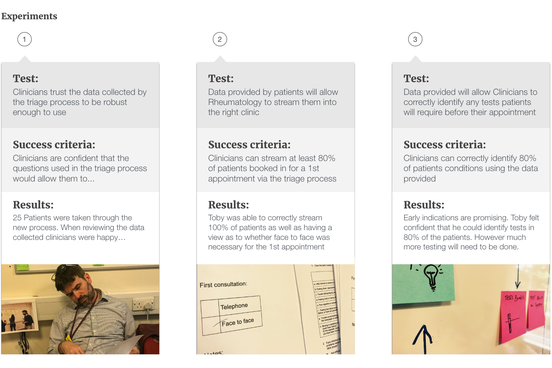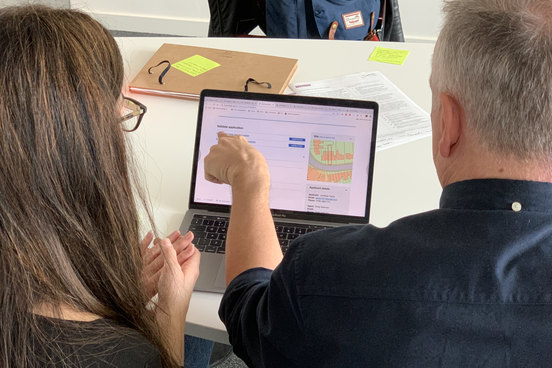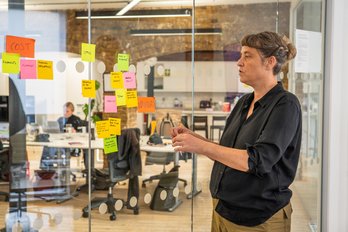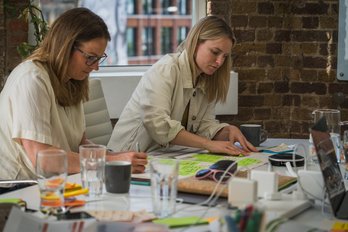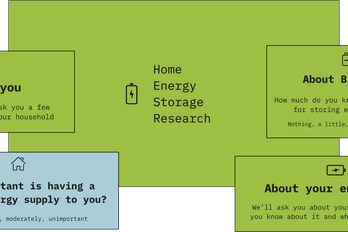The Visiontype
What is a visiontype?
A visiontype is an interactive prototype which is designed to convey the vision for your product. It can sometimes be really useful to show people what things might look like in future, or what they could look like if it weren’t for the technical, behavioural or organisational barriers in the way. Making something appear “real” can really focus people on removing those barriers which might prevent it from becoming an actual reality.
They can also be really useful when your customers or stakeholders are stuck in the present, their thinking limited by your product as it currently exists, or by the alternatives already available in the market. Visiontypes can change peoples’ perceptions and excite them to new possibilities. They can demonstrate the art of the possible and or in some circumstances expose the impossible.
Unboxed visiontype case example
During some discovery work with Reed Learning, we were asked to engage a broad range of stakeholders, including Learning and Development teams, corporate learners, training facilitators and product vendors. We wanted to learn from them what new products and services Reed might invest in that could really improve the long-term impact of their training courses.
What we found was that everyone had a very limited view of what corporate learning might look like in the future. It was constrained by the way training was currently delivered and by the slight variations on the “Virtual Learning Environment” available. In order to open up the thinking, we produced some interactive mock-ups of a fully integrated learning environment, with bite-sized learning delivered in multiple formats, dashboards that showed not only the learners progress through various modules, but also the effectiveness of their learning and how it aligned with their goals and their employees values. It included peer support, mentoring, and if we did it again today, it would no doubt include some form of magical AI. We put it on a brand new iPad and took it out for people to play with.

It was unlikely Reed could ever commit to building the platform we designed but that wasn’t the point. The visiontype allowed us to have very different conversations with people based on a more ambitious future and it allowed us to identify genuine opportunities to improve the current experience. A brand new business The Honeycomb Works emerged from that vision work with Reed.
The Lean experiment
The Lean Startup movement emerged in the 2000s and encouraged entrepreneurs to take a more methodical approach to de-risking their business ideas. Inspired by Lean Manufacturing, Design Thinking and Agile, it introduced the concept of “validated learning” to business folk who were often acting on instinct and ego.
The Lean Startup approach challenges innovators to spend time in the problem/solution space before moving into the product/market space and explicitly declare the assumptions their ideas are based on. These assumptions are then converted into hypotheses that can be tested, or validated, through experimentation.
Whilst this experimentation can involve artefacts, including prototypes, it is focused on very specific aspects or the product or service that you want to test. For example, you may create a simple landing page for a product that doesn’t yet exist in order to see how potential customers react to different value propositions or price points.
How Unboxed did it
When looking for ways to improve the experience of newly referred patients into the Guy’s and St. Thomas’ rheumatology service, we wanted to test an idea that involved asking them to complete an online questionnaire several weeks before their appointment. The information provided would determine the tests they would need before their appointment (X-ray, MRI), and the people (consultant, physiotherapist, psychologist) and resources (ultrasound machine) that would need to be available at that first appointment.
Our hypothesis was that patients would be able to provide enough information to make these decisions via a questionnaire, rather than a face-to-face consultation.
In order to test this hypothesis, we created a paper form and asked 100 patients to complete it in the waiting room before their appointment. A senior consultant then assessed the patients’ needs based solely on this questionnaire and compared it to the assessment of their needs that came out of the regular consultation. When the clinical team were confident that the outcomes were the same, and that the information provided was sound, we then moved on to test our next hypothesis, that patients could provide this information online away from the hospital.

The Minimal Viable Product (MVP)
Also emerging from the Lean Startup movement, the MVP approach to product (and indeed service) development has taken hold in larger organisations as well as new businesses. The principle of the MVP is that rather than invest in the development of a fully formed product, with all the features your customer could possibly want, you focus in on the minimal set of features that make your product useful, launch it to the market (your early adopters), and then iteratively adapt and improve it over time based on feedback and data.
Whilst this approach is entirely sensible and consistent with the agile values we promote at Unboxed, it is also fraught with danger. We’ve written about some of the challenges in a previous blog post so won’t cover them again here, other than to say that the MVP should be considered a kind of prototype, that is a “version of a product or service that allows you to learn what the next version should be”.
The MVP is not an end in itself and your first MVP is rarely actually Viable but simply a step on the long journey to create a successful product or service.
Our work on the Back-office Planning System (BOPS) illustrates this. The UK planning system is extremely complex and there are many different types of planning applications that need to be submitted by householders, businesses and property developers and processed by local authorities. Taking an MVP approach, we believed that by creating a product that could process the simplest and most widely used of these application types, the Certificate of Lawful Development, we could create something useful to planning officers.
However, whilst our first version of the service did indeed help planning officers do their jobs more efficiently, they couldn’t really use the product in the real world as there is a legal requirement to publish all planning applications on a public register, which was provided by the same supplier as the existing planning software and couldn’t accept applications processed in our system. Our product would therefore only be viable if it could process all application types and provide an alternative public register. You can read more about how these complex problems are being resolved with a suite of planning products on the ODP website.

A tool for learning
We like to consider prototypes more generally than the traditional definition, as any kind of artefact that you can share with customers (or other stakeholders) to gain insight that informs your thinking about what to do next. Wherever possible, we design them to test a specific hypothesis and we always consider whether there is a simpler way to test that hypothesis, iteratively increasing our investment as we reduce the risk that our key assumptions are wrong.
Download the Unboxed tool that guides you with prototyping and validation.
Prototyping is a key element of our Digital Accelerator. Our Digital Accelerator is an ideal combination of lightweight customer research and rapid, iterative prototyping and testing that gets you closer to launching your new product or service, with minimal risk and maximum learning.


